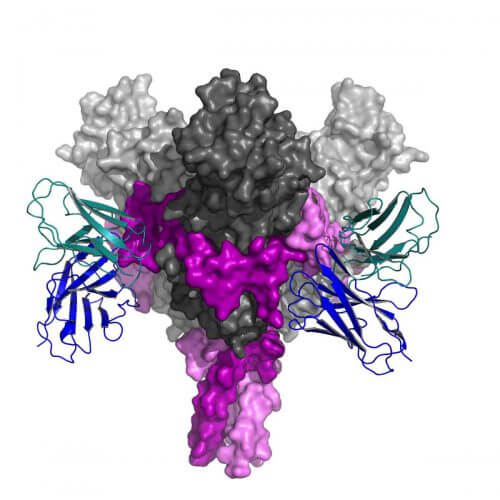Their findings may allow vaccination of more people at risk of infection

In July 2019, the World Health Organization declared an international emergency following the outbreak of the Ebola disease in the Congo. Until not long ago, medical teams working in Africa stood helpless in the face of these deadly outbreaks, but since 2016 vaccines have been developed that may change the picture. More than 100,000 people have already been vaccinated against the violent disease, but the vaccines are still experimental, the amount available is small, and their long-term effectiveness is unknown. Weizmann Institute of Science scientists recently joined forces with a research team in Germany to reveal what exactly happens to the immune system after the vaccine is given. The findings, published in the scientific journal Nature Medicine, may help formulate better strategies to deal with the disease and prevent it.
"It is very difficult to produce vaccines against Ebola, which are produced by recombinant genetic methods by attaching the Ebola protein to a harmless virus," says Dr. Ron Diskin from the structural biology department at the institute. "Therefore, the amount of vaccines produced today is not enough to vaccinate the entire population, and the vaccine is given only to people who are in the closest contact with Ebola patients. If we better understand the immune response, we will not only be able to improve the vaccine itself - but also understand if the dose given today is optimal, and if the vaccine is effective against different strains of the virus."
It is very difficult to produce vaccines against Ebola, so the amount of vaccines produced today is not enough to vaccinate the entire population."
Dr. Florian Klein from the University of Cologne and his research group tried to find signs of the immune response in blood samples of six subjects who received the vaccine a year or more earlier. They focused on the B cells that produce antibodies that constitute our "immune memory", and found a large number of antibodies that bind to the proteins of Ebola viruses. Dr. Diskin and his research team - which includes Dr. Nadav Elad from the Department of Chemical Research Infrastructures and Dr. Hadas Cohen-Dabashi from Dr. Diskin's research group - decided to focus on two of these antibodies, which were suspected to be deeply involved in the long-term immune response that prevents infection. Their goal was to understand how and where these antibodies bind to the protein on the outer membrane of the virus (a protein on which the vaccine is based), and how exactly this binding neutralizes the virus so effectively. To this end, the researchers used a new system: a powerful and advanced electron microscope, recently installed in the electron microscopy unit of the Weizmann Institute of Science, which allows to identify the three-dimensional structure - down to the level of individual atoms - of an antibody bound to its target site. "Until recently, such research in structural biology involved a complicated process of creating crystals and performing X-ray crystallography - a process that usually lasted several months or more," says Dr. Diskin. "Now we can skip creating the crystals and decipher the structure of a protein within a few weeks."
The antibodies we studied bind more efficiently to the viral protein than other antibodies that are currently being tested as a possible treatment for Ebola."
Although many of the antibodies produced by the B cells bound to the proteins of the virus - some probably more efficiently than others - the researchers showed that the two antibodies they focused on were indeed particularly effective in stopping the virus. Dr. Diskin and his colleagues revealed the structure of these antibodies and mapped the exact points where they bound to the viral protein. "In fact," says Diskin, "the antibodies we studied bind to the viral protein more efficiently than other antibodies that are currently being tested as a possible treatment for Ebola."
Another important finding that emerged in the study is that in the blood of subjects who received a lower dose of the vaccine, an amount of effective antibodies was found similar to that in the blood of subjects who received a higher dose. This fact may lead to a re-examination of the treatment protocols, and possibly allow protection for more people in the future by injecting smaller vaccine doses. The researchers do not have enough information at this stage to determine if the vaccines are indeed effective against different strains of Ebola, which are common in different parts of Africa, but they hope that further research will provide this information, and will even make it possible to improve the vaccine so that it can fight the spread of the disease throughout the continent.
for the scientific article
